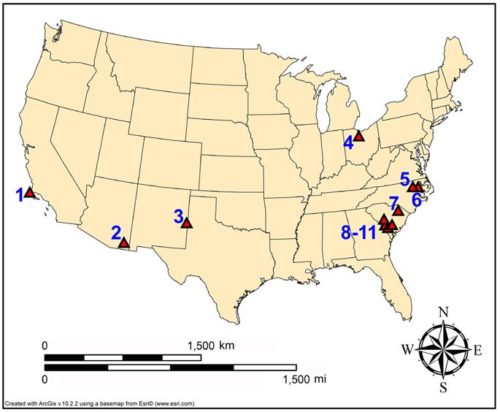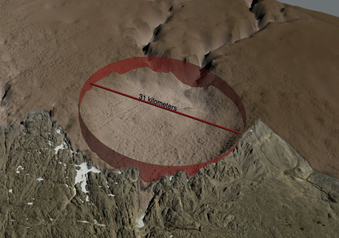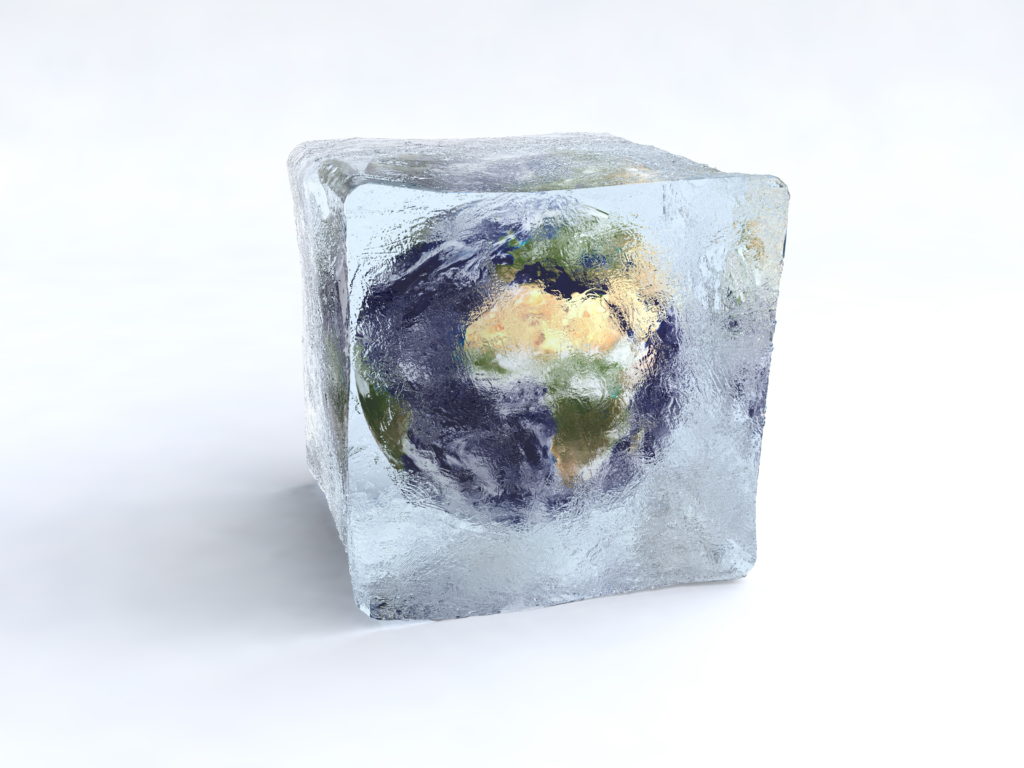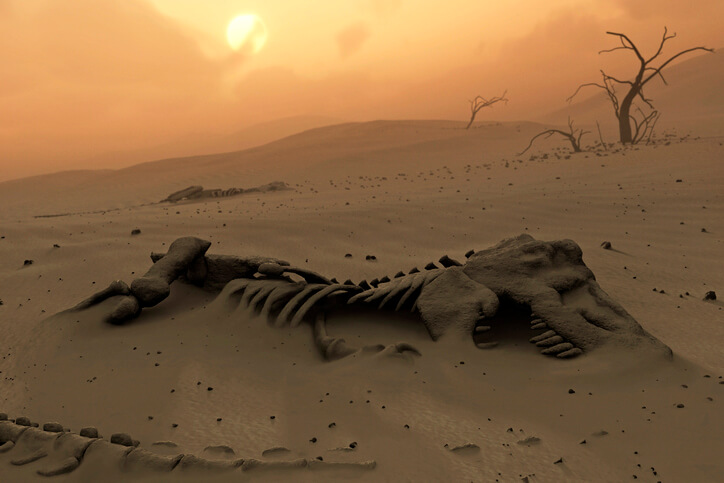In the last 20 years, researchers have been following the scent of a planet-wide mystery. The trail of a disaster and extinction event at the end of the last ice age, when human civilization arose. In geological terms, it is a blink of an eyelid, yet we know less of the time than the dinosaur extinction. For nearly a century, researchers across many disciplines have been piecing the story together. Science takes times to build evidence. When the penny drops, it spreads like a comet striking the conscious minds of humanity.
Around 12800 years ago the world caught on fire. New research published in the Journal of Geology has revealed 30 million square miles of earth burnt during this time. That is roughly 10% of the total biomass on the planet. The Younger Dryas impact hypothesis is one explanation for the findings.
On its own, you may think, well so what? However, the study sits in a body of evidence that describes a period in earth’s climate that was like no other. 12 800 years ago, the North American ice-sheet vanished. It caused the great flood, intense periods of global warming and cooling, megafauna extinction, and human population decline.
The earth was like the scene of a crime. Evidence lay dotted and spread, wiped clean by the nature of its own ferocity. 12 000 years later, the offender is coming forward.
The Younger Dryas Impact hypothesis describes a possible cause for the cataclysmic scenario. In this article, we will explore the evidence that the earth was the victim of a very recent and life-shaking cosmic impact.
The Prehistoric end of the Ice-Age and the great flood
The Younger Dryas was a period that lasted from 12 800 – 11 600 years ago. It happened as the earth was exiting the last glacial maximum. Ice-sheets covered most of North America and some of Europe. Sea-levels were 400ft lower exposing land mass the size of China and Europe together.

Earth was slowly warming, and then, without warning, it was thrown back into ice-age conditions. Temperature drops of 10 degrees happened in a period of ten years. The North American ice-sheet melted so rapidly that it caused the great flood.
Sea levels rise of 400ft happened globally. The geology of the US now bears the scar of the floodwaters.
The Younger Dryas lasted 1200 years long before an intense global warming event of 10-15 degrees. During this time human populations were severely affected. The North American Clovis Culture vanished, and 75% or 120 species of the US megafauna experienced a mass extinction event.
Each of these stories, when viewed on their own don’t mean a lot. Put them together, though, and the Younger Dryas impact satisfies the criteria to explain the planet-wide conditions.
What caused the Younger Dryas?
The Younger Dryas impact hypothesis was first proposed just ten years ago. It was ridiculed due to lack of evidence, in particular, a smoking gun, or an impact crater.
The theory suggests a comet impact 12800 years ago destroyed the North American Ice sheet and set off global wildfires. As a result, periods of extreme climate change devastated the planet alongside human and animal populations.
A group of scientists named The Comet Research group have led the way to understand the period. They have proposed that around 12 800 years ago, a giant comet entered the solar system and began an Earth-crossing orbit.
The comet is said to have then broken up into fragments and entered the earth’s atmosphere. One and maybe even multiple fragments of the comet hit the earth and caused a worldwide catastrophe.
Estimates suggest the comet was a colossal 60 miles in diameter. An impact with an object of that size today would send human civilization back into the Stone Age. Alternatively, perhaps, extinction.
If the impact did happen, it shakes the very foundation of our history as a species on earth. At a time when modern civilization arose, the Younger Dryas is a critical period for the human origin story.
At the very least, the impact hypothesis needs to be heard.
The Comet Research Group
A team over 50 scientists are compiling evidence from all over the world. Their mission is to confirm, through evidence, that it was indeed a comet that struck the earth 12800 years ago.
The issue is that comet impacts are difficult to prove. Scientists that work in the field must fulfil strict criteria to prove an impact crater.
The idea should not seem too far-fetched. It was only just over 100 years ago that an object from outer space hit the earth and caused a localized catastrophe.
In 1908 a relatively small meteorite exploded in the atmosphere in Tunguska, Siberia. Luckily it happened over forestland and not a city, where 80 million trees were wiped from the earth.
If the Tunguska event occurred slightly later over Europe, it would have re-written human history.
How the dinosaur extinction happened
It is ironic we know more about the dinosaur extinction of 65 million years ago than we do about the events of the Younger Dryas.
While it’s common knowledge today, the dinosaur impact took decades to prove. Once the first fossil was found many theories surfaced of how the mega-beasts declined. It took the impact crater to be located in the Gulf of Mexico to reveal one of the biggest extinction events of early earth history.
The idea of an asteroid wiping the dinosaurs out was met with strong skepticism. Then iridium-rich layers 30 times the amount average in the Cretaceous/Tertiary (KT) boundary began appearing. It wasn’t until the impact crater appeared that the impact theory was accepted.
Today a similar growth in evidence is happening for the Younger Dryas impact.
Did a comet cause the Younger Dryas?
‘Impact proxies’ are the evidence that suggests impact events. Think of them like fingerprints of an outer space object.
If they can be confirmed from outer space, they can be dated to time depending on their surroundings.
Let’s look at 8 Impact Proxies for the Younger Dryas Impact Hypothesis.
1. Global Wildfires
The most recent study shows 10% of all biomass burning around the Younger Dryas period. It doesn’t prove an impact on its own, it does build a strong case for a context of cataclysm.
2. Platinum layer

Sites tested for platinum deposits in the US. Source
One of the first lines of evidence was when archaeologists discovered a platinum layer dating to the Younger Dryas. Platinum is an element most often found in meteors.
The strange layer of platinum, dated to 12 800 years ago, is found at sites all over the world. In the Northern Hemisphere alone, 26 documented sites have so far shown a platinum-rich layer. Other sites include North America, Greenland, Russia, The Netherlands, Lithuania, Belgium, and the French Italian border.
3. Melt-glass
A team of international researches studying melt-glass finds in Pennsylvania, South Carolina, and Syria. The 18-member team has discovered the thin glass layer dating to roughly 13,000 years ago.
Melt glass is only formed under intense amounts of pressure or heat. It requires temperatures between 1700 and 2200 Celsius. These conditions are equal to that of an atomic bomb.
The layers match the melt-glass found after the 1945 nuclear bomb test in Socorro, New Mexico. Nuclear bombs generate enough heat generated to make sand not only melt, but also boil.
4. Micro Spherules
Unexplained deposits of microspherules have been found across North America. They are also found across 18 sites in 9 countries. Dating has pointed them to the Younger Dryas. The samples share impact proxies including nano-diamonds, melt-glass, iridium, and buckminsterfullerenes. Together these elements provide strong suggestions of origins from outer space.
5. Carbon Spherules
Carbon spherules have been found in so Sheridan cave in Wyandot County, Ohio. Formed under intense heat, they are basically melted rock. Spherules are formed by lightning, forest fires, or burning coal. However, the spherules found here have been established to be due to combusted rock
These date to roughly 13,000 years ago, right at the start of the Younger Dryas period. The same spherules were also found at 17 other sites around the world, across four continents over an estimated area of 30 million square miles.
6. Sediment layer
In the floor of Lake Cuitzeo, Mexico a dark thin sediment layer was found. After analysis, it was found to contain an exotic collection of materials.
These included nano-diamonds and impact spherules, which, when found together are the result of a cosmic impact on the earth.
Appearing in the same layer, were spherules that had collided with others at extremely high speeds. These markers imply a chaotic and volatile event.
7. Mammoth tusks pelted with meteor
Megafauna populations are known to crash at 10 000 years ago. However, some studies have found tusks pelted with meteors. The dating is controversial, some saying they date to roughly 13 000 years ago, others saying the fossils are much older.
8. The impact crater
For the most part, an impact site is not been located. One theory explains that the major impact occurred across the top of North American ice sheet itself. The glacier was so thick that such an event could be devoid of a crater site.
Most recently, scientists have discovered a 31 km wide-impact crater beneath the Hiawatha glacier in Greenland.
It was found using airborne radar surveys which unveiled a circular bedrock depression beneath the ice
The impact was most likely made by an iron meteorite more than 1 km wide. Some have suggested it dates to 12 000 years. However a sub-glacial crater has never been found before, so exact times are difficult to ascertain.
While not proving it, the Hiawatha crater certainly adds credence to the Younger Dryas Comet hypothesis.

The Hiawatha crater could date to the Younger Dryas comet period.
Conclusion
The cause of the Younger Dryas could become a crucial scientific discovery of the 21st century. Today the evidence is irrefutable that human ancestors survived a harrowing period to live on earth.
The mystery is compounded by the destructive nature of the Younger Dryas. Evidence would be wiped clean from the earth or submerged beneath the rising seas.
While researchers have not confirmed an impact, the clues are pointing to something of cosmic origin.
We will be following the Younger Dryas Impact Hypothesis.
If you have anything to add to this article, please leave it in the comment section below.
To learn more about the comet research group, or donate to help their research, please click here.
Further reading:
- https://www.ncbi.nlm.nih.gov/pubmed/23878232
- https://www.ncbi.nlm.nih.gov/pubmed/17901202
- https://www.nature.com/articles/srep44031
- https://www-journals-uchicago-edu.ezproxy1.library.usyd.edu.au/doi/10.1086/695704
- http://advances.sciencemag.org/content/4/11/eaar8173.full


 A multi-discipline team have brought forward the Younger Dryas Impact Hypothesis
A multi-discipline team have brought forward the Younger Dryas Impact Hypothesis 
























